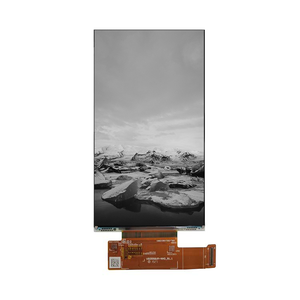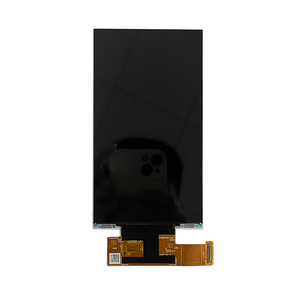(1136 products available)



































































































































































































The IPS LCD and TFT technologies for LCD screens are not the same thing, despite what some people might think.
IPS LCD
Structure: The IPS (In-Plane Switching) uses LCD technology. By leveraging Liquid Crystal Display (LCD) technology, it aims to solve the problems associated with Twisted Nematic (TN) displays. IPS panels rotate the orientation of the liquid crystals between the glass panels when in-plane switching. Crystals are aligned parallel to the glass panels rather than twisted. This alignment improves color reproduction and viewing angles.
Types: There are different kinds of IPS panels; each has unique properties tailored to diverse needs and budgets. Display technology has made significant strides over the years. The variants are Advanced Fringe Field Switching (AFFS), Advanced In-Plane Switching (AIPS), and In-Plane Switching (IPS).
Improved Variants: AFFS panels, for example, offer better brightness and a wider color gamut. They also provide enhanced viewing angles compared to conventional IPS displays. Alternatively, AIPS monitors deliver even more precise colors, superior contrast ratios, and astonishingly wide viewing angles, regardless of the user's perspective concerning the screen. People who do graphical work or make videos will find that AIPS displays are very useful and affordable. They cost a little more than normal screens. However, the benefits AIPS provides in color accuracy and viewing angles makes the extra cost worthwhile. Another category of IPS is optical IPS, particularly known for its excellent color reproduction and outstanding viewing angles.
Applications: AIPS is adopted across various fields, from smartphones to TVs. The variations of IPS provide different performance levels at price points suited to diverse budgets.
TFT
TFT, which means Thin-Film Transistor, is a kind of LCD screen. It is an essential piece of LCD technology that helps make images on the screen. TFT is a specific type of panel that uses LCD technology, like IPS. However, unlike IPS, TFT screens have transistors for every liquid crystal in a cell. These transistors control the liquid crystals separately, letting them all move independently. This improves image quality and response times.
TFT screens are often made with cheaper components than IPS screens, which makes them cost less. While they provide better images and response times than regular LCDs, their viewing angles and color reproduction won't be as good as those on IPS panels. TFT displays are found in many devices, including cameras, phones, and tablets. They work well for most purposes but aren't best for professional users who need the absolute best screen quality.
TFT LCD has several characteristics that make it useful in various applications. Here are some of them:
The application of TFT varies according to the specific type used. For instance, the TFN type can be used for applications where the TFT screen can be bent. Therefore, tablets and smart wear can use a TFN type. On the other hand, the A-Si type can be used for mobile phones, PDAs, and digital cameras. The application for IPS also varies depending on the variation used. The wide viewing angle and excellent image quality are some reasons why the application varies. The different types are used for distinct purposes.
Selecting an IPS LCD or TFT screen involves assessing viewing angles, color accuracy, response times, and production costs.
Viewing Angles and Color Accuracy:
All IPS displays have superior viewing angles, and TFT displays have various subtypes. The viewing angle of the IPS screen does not change whether it is viewed from the sides or the top. IPS screens also provide color accuracy, while some TFT screens offer decent color accuracy. TFT screens with Wide View Technology (WVT) have enhanced color accuracy.
Response Time and Production Costs:
Response time tells how quickly a display system can return to the current image after changing images. IPS screens have a quicker response time compared to most TFT screens, especially those with a slower response. The production cost of IPS screens is higher due to the complexity of the technology compared to TFT screens.
Q1: What are the main differences between IPS and TFT?
A1: Comparison between IPS and TFT shows that they differ in terms of viewing angles, response time, color reproduction, and production cost. IPS has better viewing angles and color reproduction than TFT.
Q2: What are the advantages of IPS?
A2: The advantages of IPS include better viewing angles, color accuracy, and longer response time. Because of these benefits, many devices use IPS to display images.
Q3: What are the advantages of TFT?
A3: Benefits of TFT include shorter response time and lower production cost. TFT panels can display images at a shorter time, which is suitable for devices with a limited budget.
Q4: Which is better for color accuracy - IPS or TFT LCD?
A4: IPS technology is better for color accuracy than TFT. IPS can reproduce accurate and vibrant colors for different viewing angles.
Q5: Which TFT LCD screen uses more power?
A5: Although TFT panels have better response time, they consume more power than IPS panels. TFT uses older technology, which is less energy-efficient than IPS.